User Settings
6The Settings menu is available for all users. The included items allow configuration of the user interface to align with the user’s individual preferences. Settings here apply only to the logged-in user and may not be set by an Admin or Manager.
Access the Settings menu by selecting the gear icon in the Quiq application toolbar.
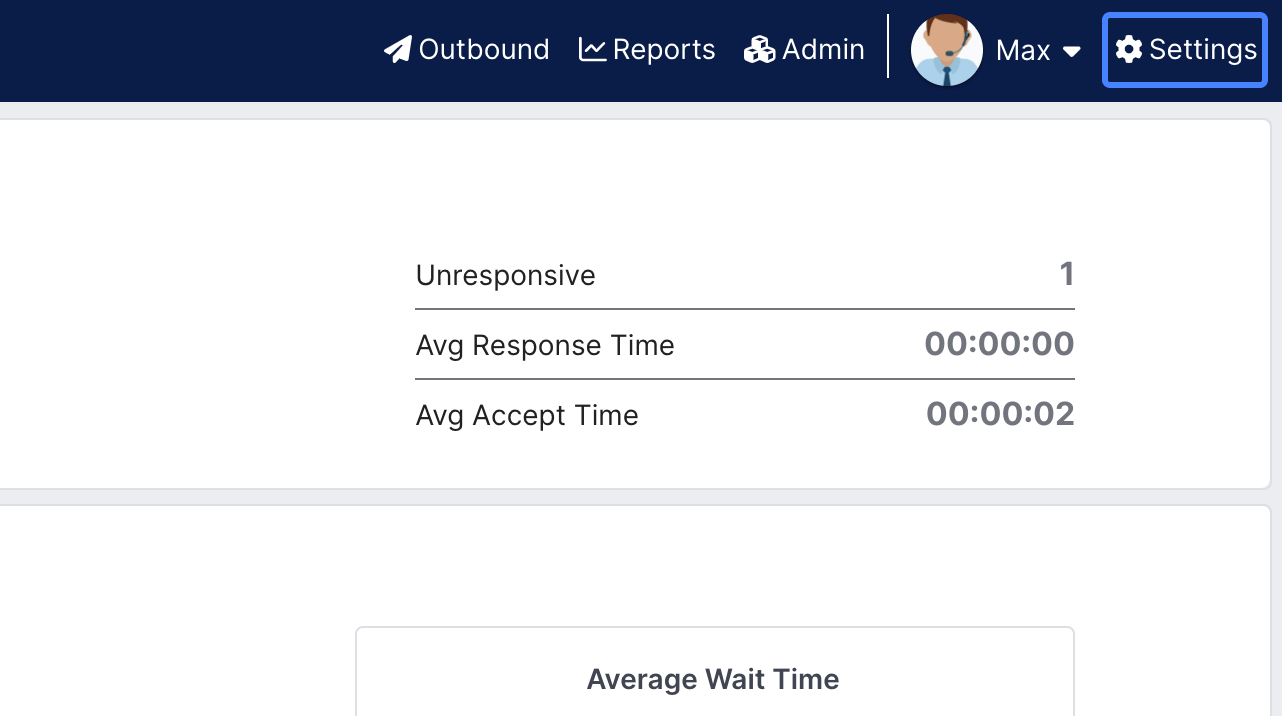
⚠️ NOTECRM integrated customers may access Settings by selecting the item from the menu button. CRM integrated clients may not have all the options shown based upon available screen space.
User Settings Profile
This section allows the user to set a profile picture, display name, and select the Quiq application they'd like to see first when logging in:
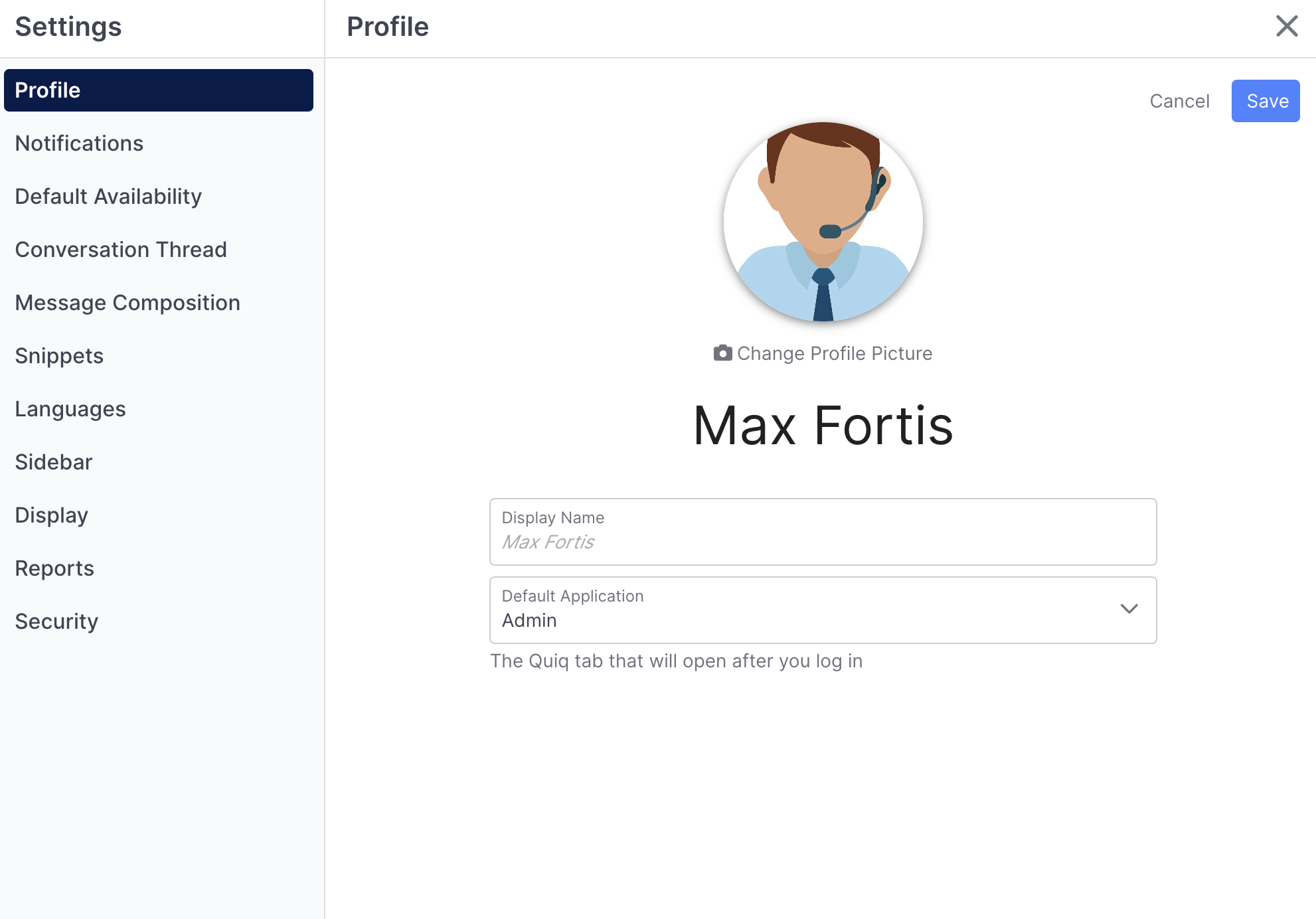
Profile photos uploaded are cropped to match the round format provided. Note that these photos may also be customer facing if enabled for web chat. Otherwise, photos are just internal facing, for other users of the Quiq application. If no photo is uploaded, a placeholder with user initials is displayed.
Display Name is only applicable if enabled for web chat, it is not used anywhere else.
Users can only see and select a Default Application that they have the appropriate permission levels for. The Default Application field isn't available for Agent permission-level users, and it isn't available in Quiq sites that have a CRM integration.
User Settings Notifications
Various notification options may be enabled or disabled here to alert a user to the fact that a new conversation, or new message for an existing assigned conversation, has been received. Clicking the “Try it” button will provide an example of the behavior.
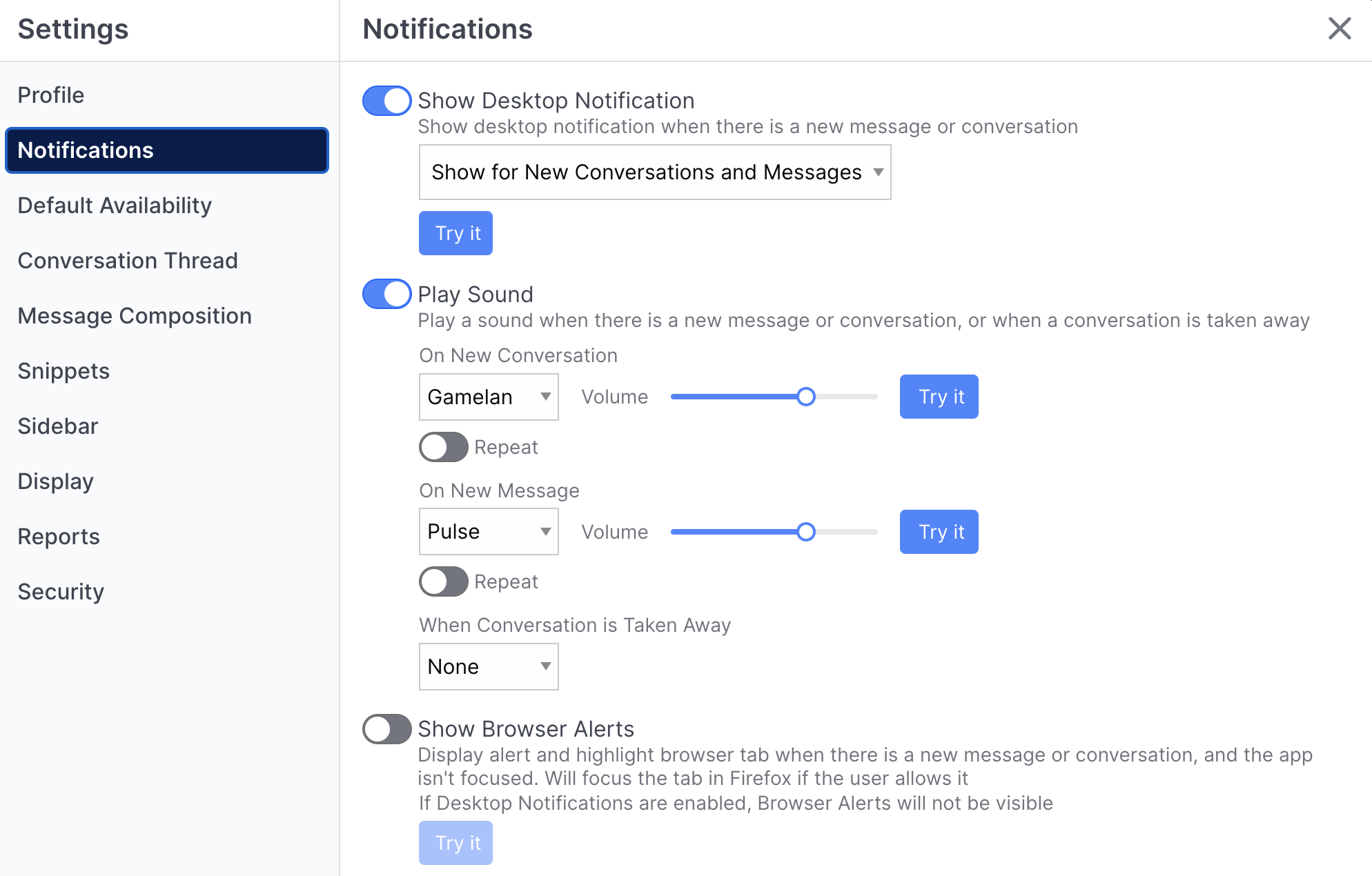
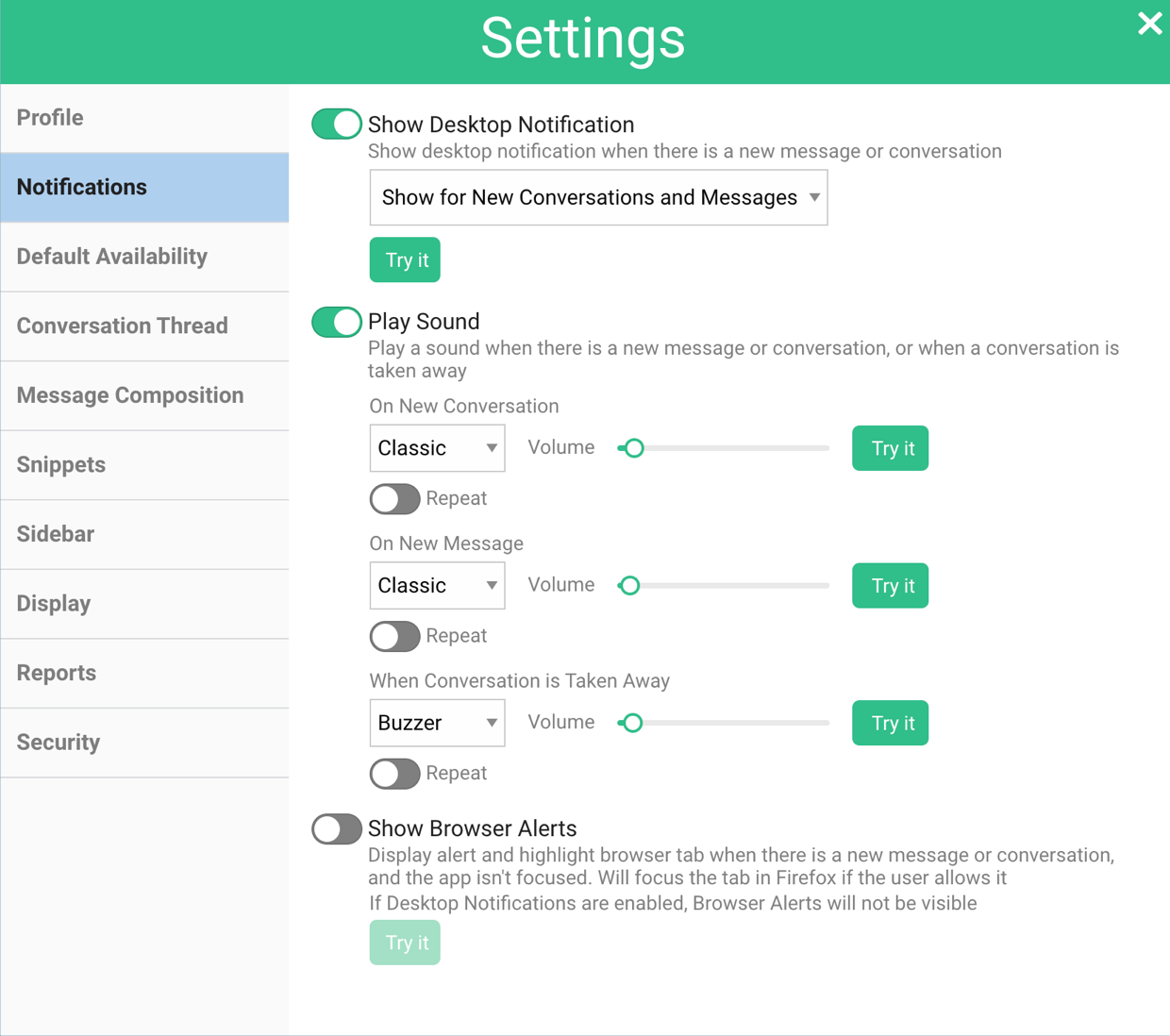
User Settings Default Availability
The user may set the Default Availability applied automatically at login. Choosing the Available status will immediately cause the configured number of conversations to be offered if there is a queue backlog.
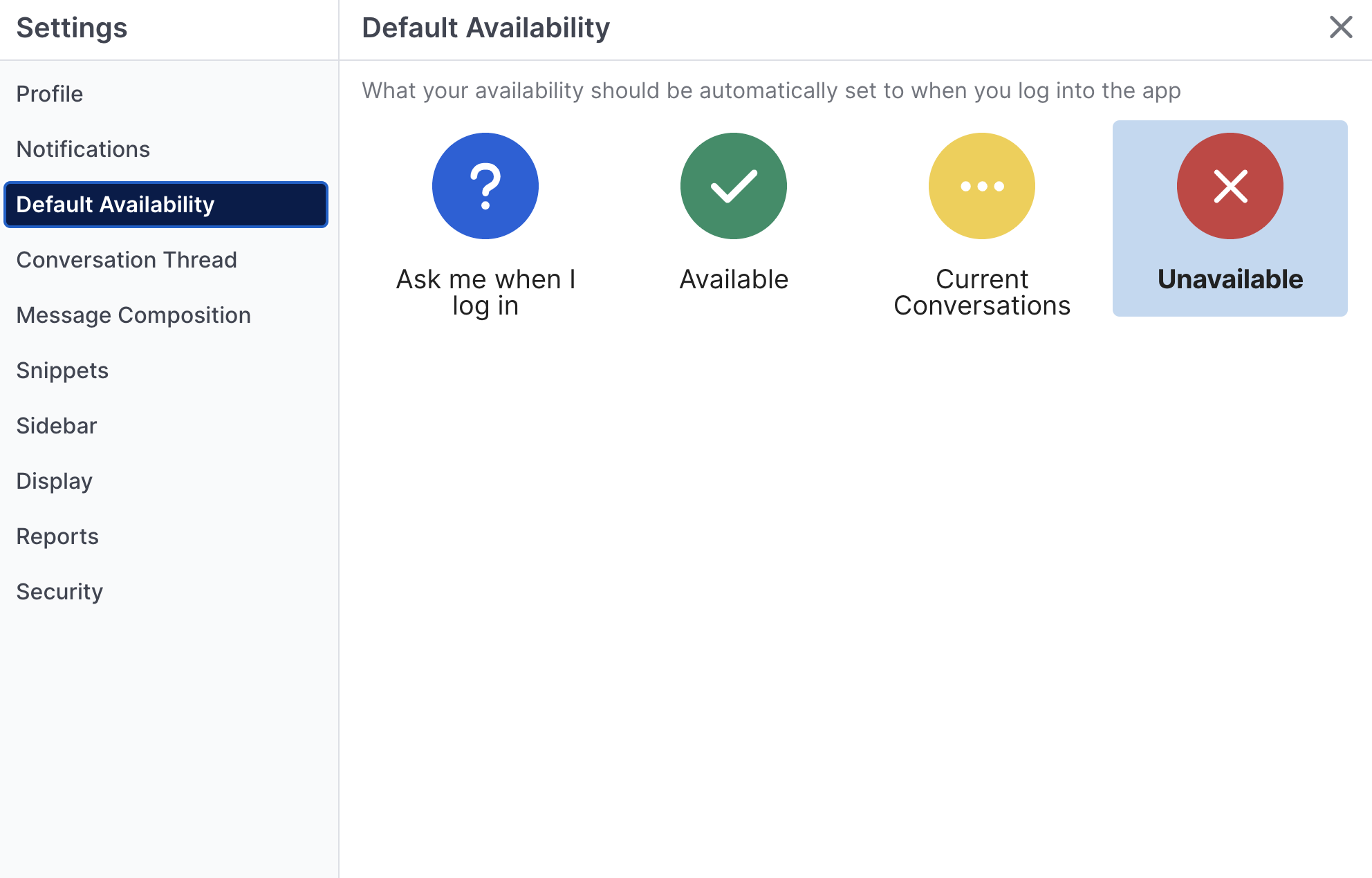
User Settings Conversation Thread
This section allows the user to toggle ON/OFF the timestamp and informational messages about the conversation. It is recommended that Managers and Admins should toggle both on to allow analysis of conversations. These settings apply wherever the conversation transcript is displayed. The image shown is updated to provide example output based on the settings selected.

User Settings Message Composition
This section allows the user to set the behavior of the return/enter key. The default behavior is to send the message typed in the message area. Selecting “Add New Line” will instead result in a new line being added to the message and the user will be required to click the Send button to send the message.
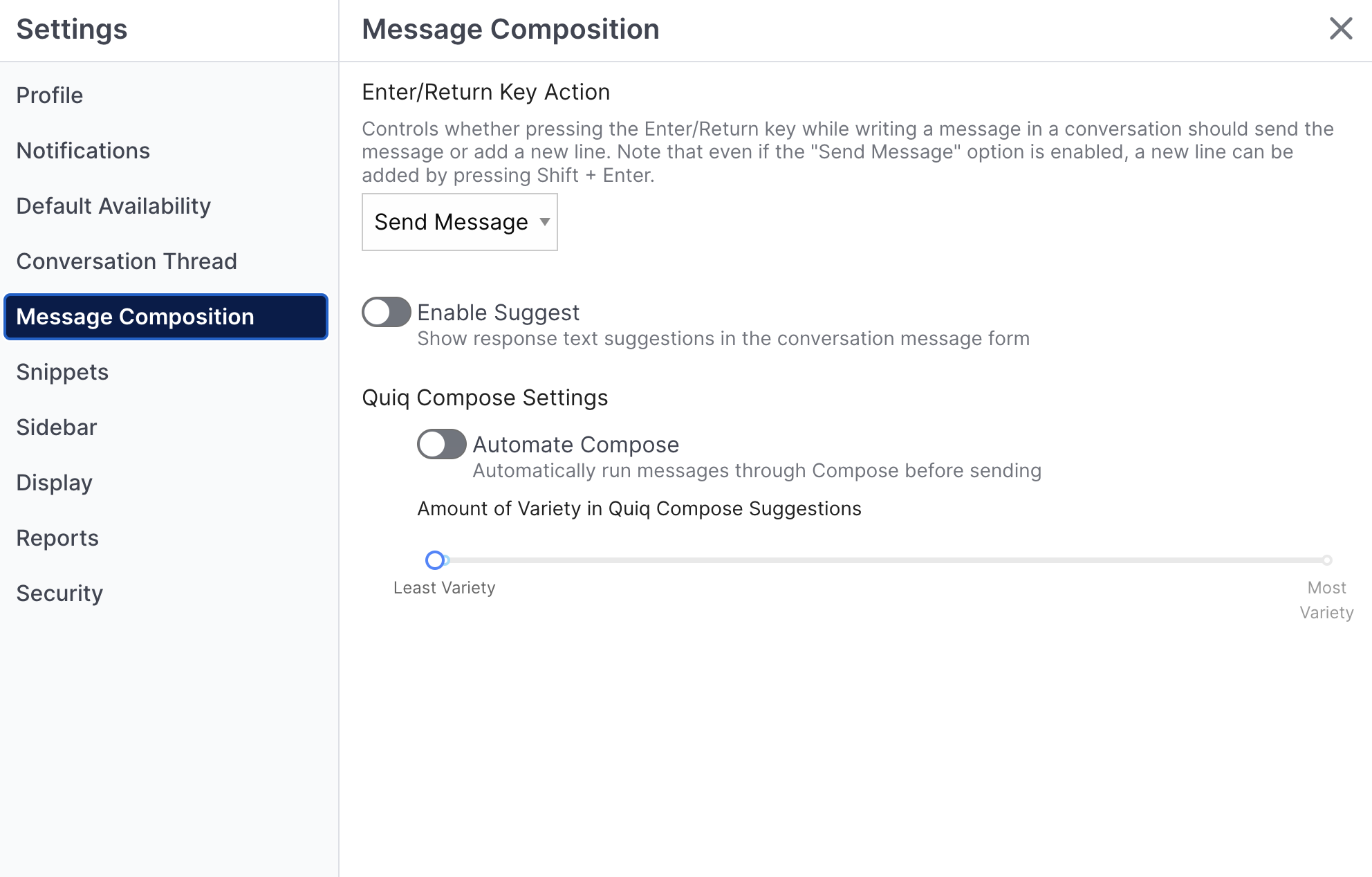
Languages
This section allows users to define specific languages they are comfortable speaking. If Translate is enabled, languages the user doesn't support will be automatically translated. If messages are translated, and the user speaks multiple langauges, the languaged marked preferred will be the language messages are translated to.
If a user does not define specific languages they support, the Amin level Languages will be used.
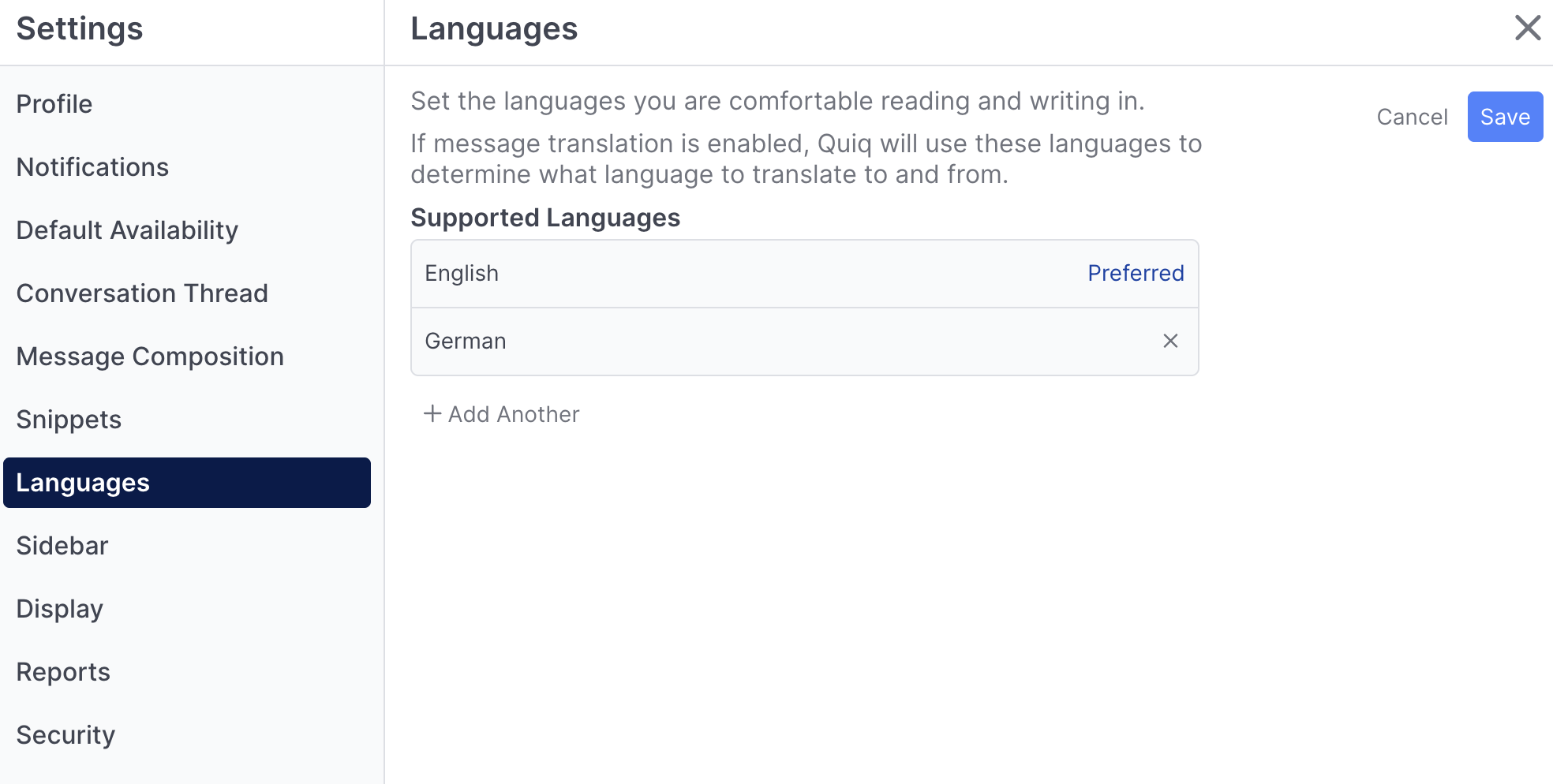
User Settings Sidebar
The Sidebar may be configured to display any or all of the following items.
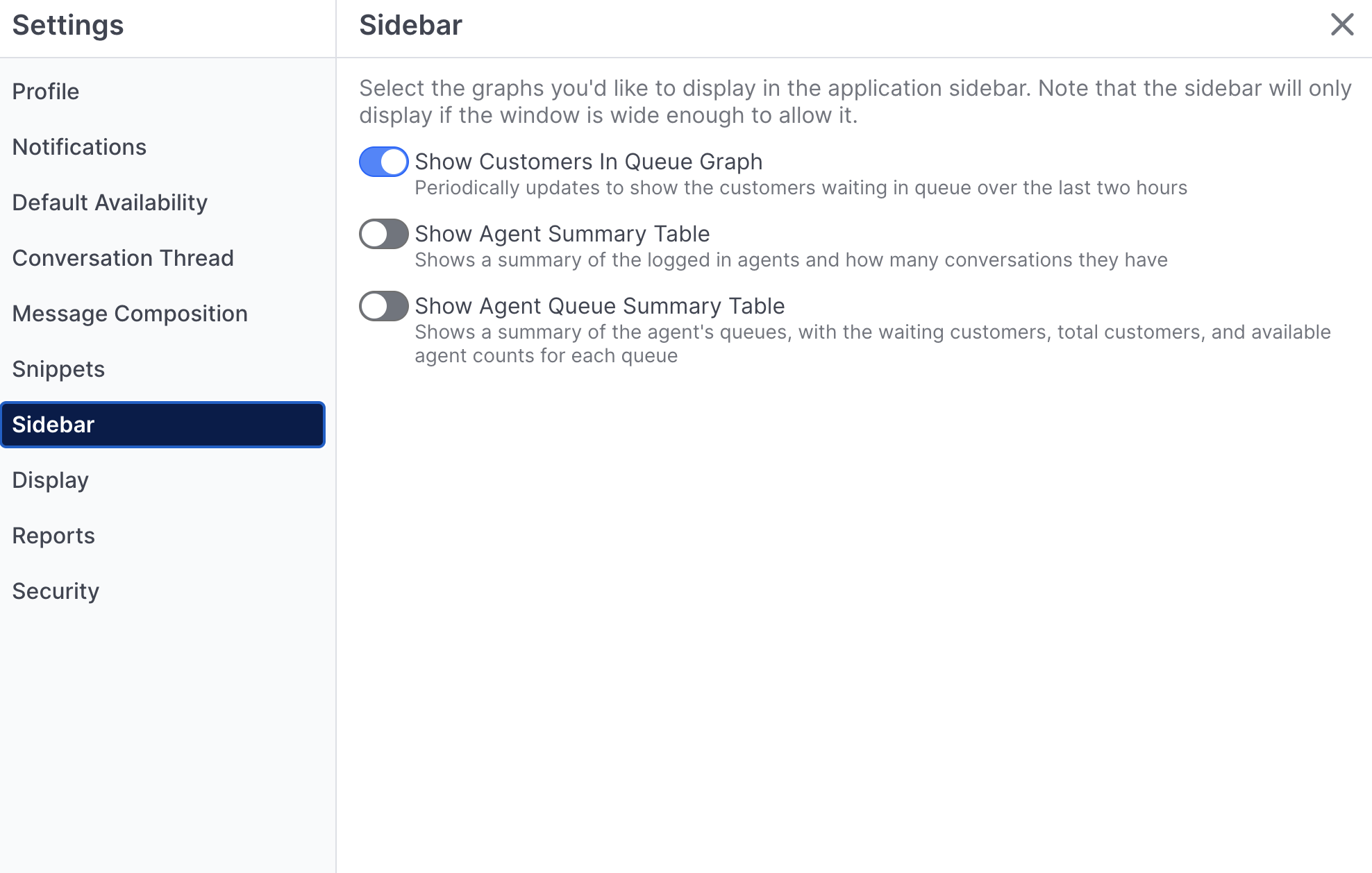
Customers In Queue Graph
This gives the agent a near real-time view of the number of conversations queued.
Agent Summary Table
The other agents logged in are listed, along with the count of their active and completed conversations for the day.
Agent Queue Summary Table
This option lists conversations in all queues the agent covers. This must be enabled for the Request Conversations button to be visible to the agent.
Additionally, the "Allow Agents to Request Additional Conversations" option must be enabled by your company's Quiq administrator via Routing for the Request Conversations button to be visible to the agent.
The Request button will request the next conversation from ANY visible queue. Any queue with conversations will also display a button to select the next conversation from that specific queue.
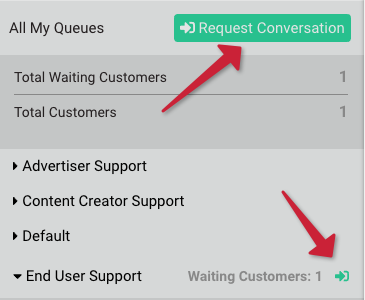
User Settings Display
An agent may resize the sidebar area and the field view area of the workspace to fit preferences. If the workspace becomes unworkable, clicking the Reset button displayed here restores the workspace to original dimensions.
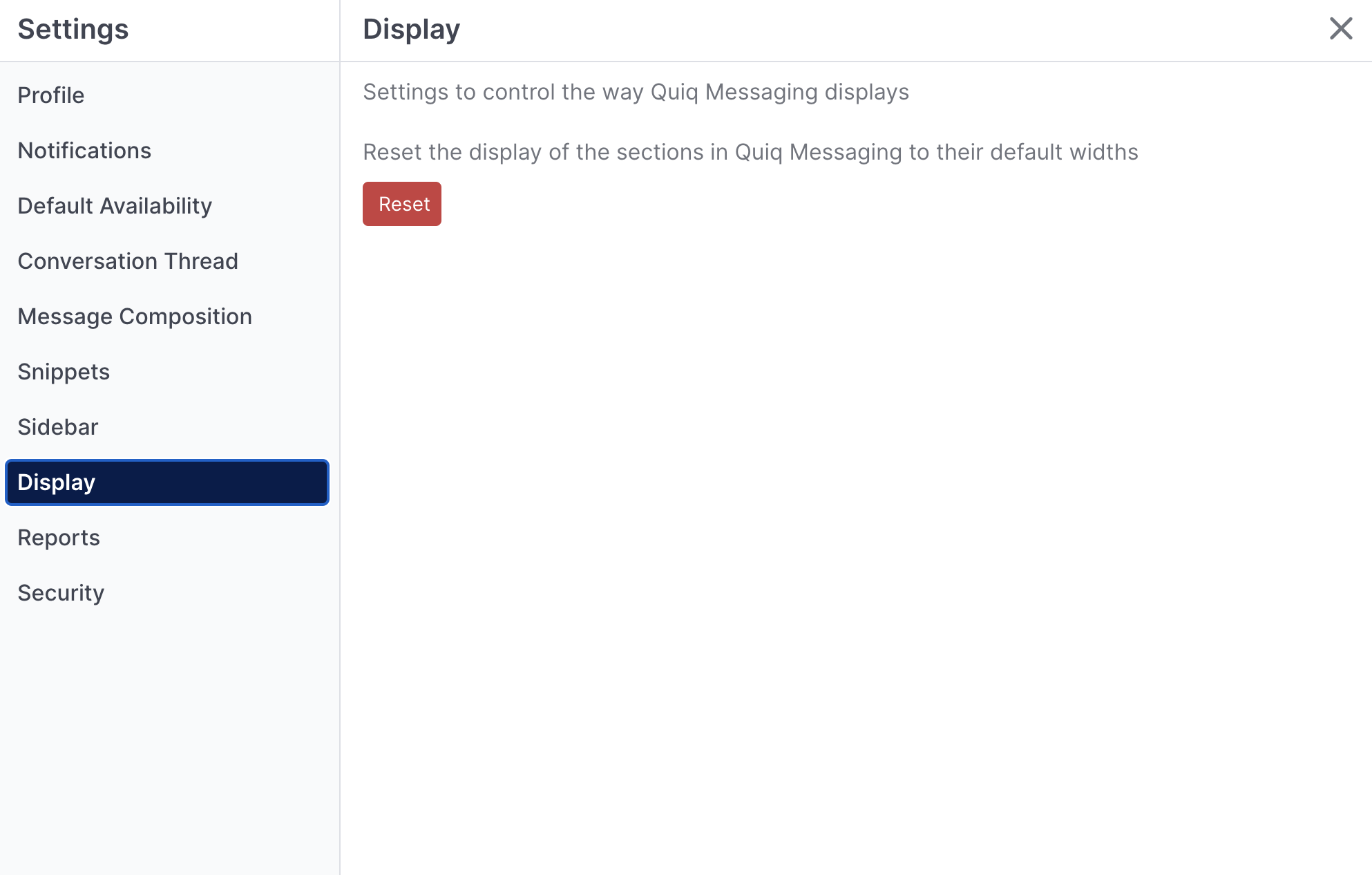
User Settings Security
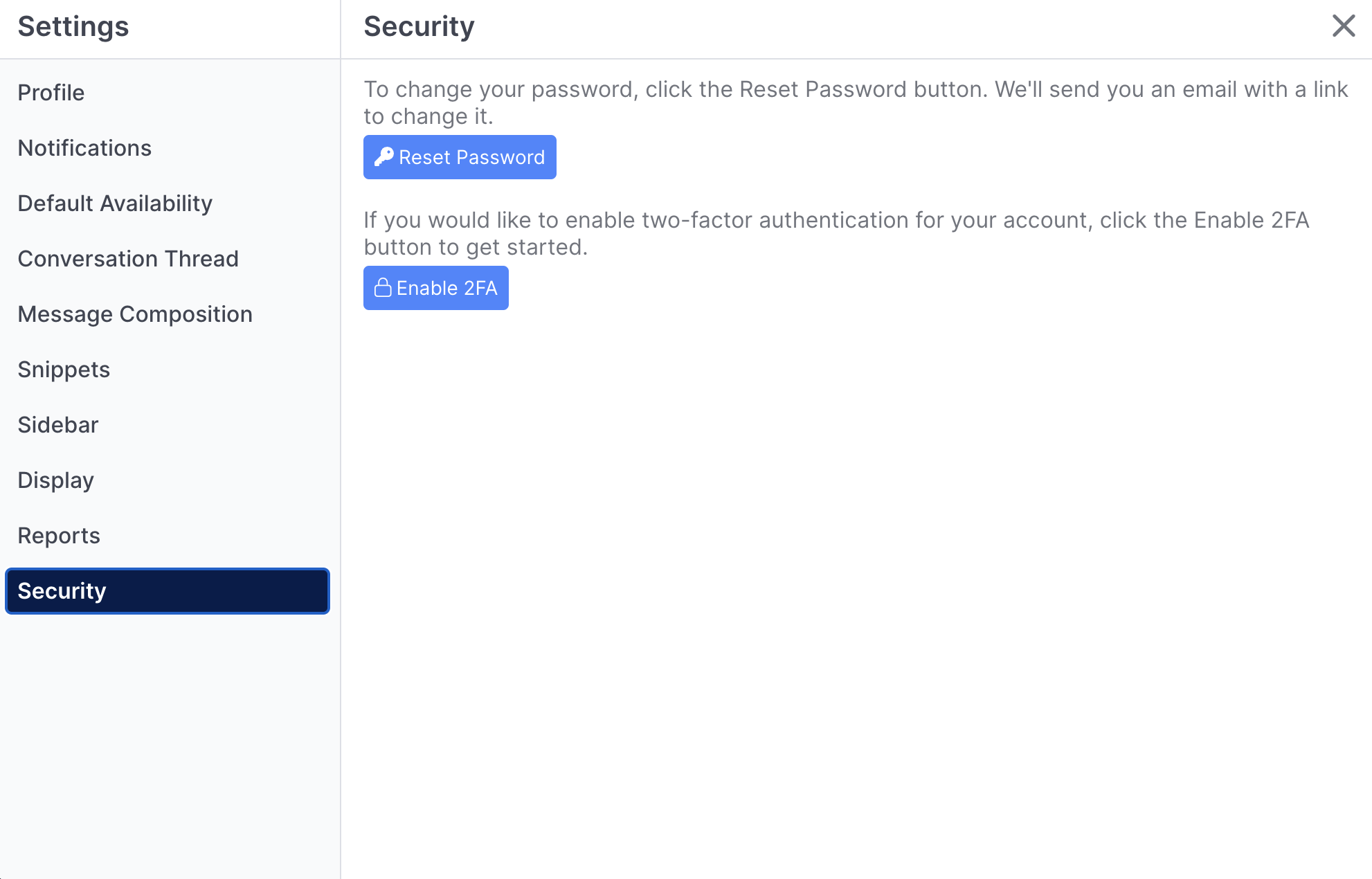
Reset Pasword
Clicking the Reset Password button triggers an email from the Quiq system to the user’s configured email address. The password will only be changed if the user follows the instructions in the email. The password is NOT reset by clicking the button. Learn more about passwords
Enable 2FA
To enable two-factor authentication for your account, click the Enable 2FA button and follow the prompts to scan the QR code with your preferred authentication application:
NoteIf you are using a CRM integrated with Quiq you may not see or be able to access the Security settings as your CRM serves as your identity provider.
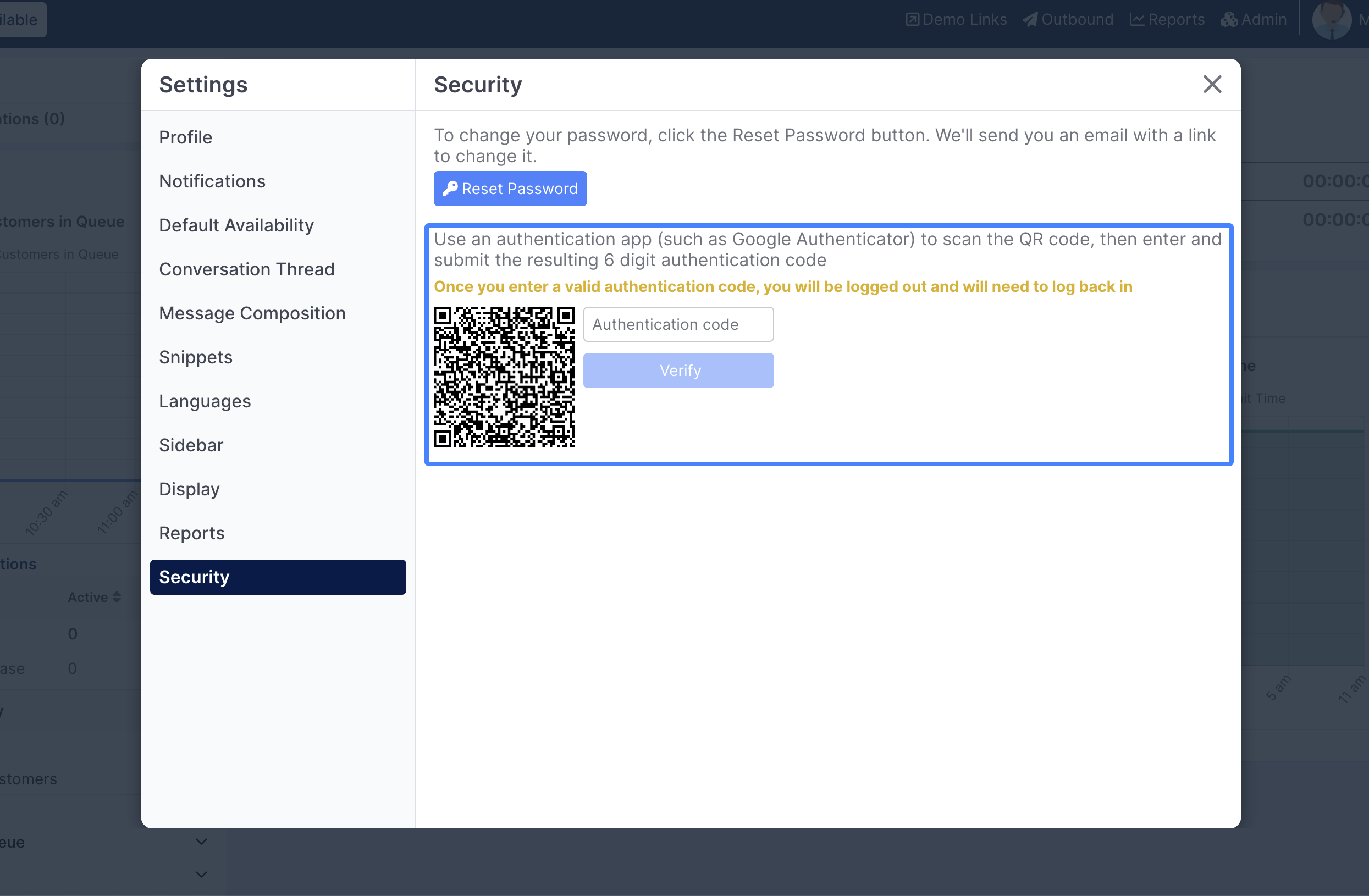
Once you scanned the QR code and entered the authentication code from your Authenticator app, you will be logged out of Quiq, and must login again using 2FA.
You can view a walkthrough of how to enable 2FA below:
Updated about 2 months ago
